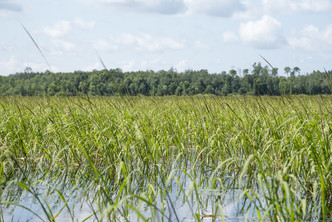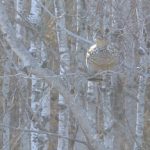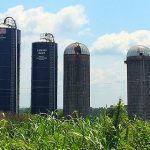DNR offers tips for those new to harvesting or considering taking up the activity
 Wild rice conditions are looking good this year in many areas of Minnesota and the Department of Natural Resources is offering tips and a reminder of important regulations restricting harvest to rice stands that are ripe.
Wild rice conditions are looking good this year in many areas of Minnesota and the Department of Natural Resources is offering tips and a reminder of important regulations restricting harvest to rice stands that are ripe.
“Favorable weather without too much heavy rain early in the season has been a positive for wild rice,” said Ricky Lien, DNR wetland habitat team supervisor. “As people consider harvesting, they need to know the regulations that help protect wild rice stands for future years.”
Minnesota has more acres of natural wild rice than any other state in the country. Wild rice and its harvesting are profoundly important to Minnesota’s tribal nations, for cultural, spiritual, and social reasons. Many other Minnesotans also enjoy harvesting wild rice, an all-natural and nutritious grain.
Harvesters usually use a nonmotorized canoe with a push pole or paddles for power, and collect rice using two sticks, or flails, to knock mature seeds into the canoe. While labor intensive, harvesting wild rice can be rewarding and finding a mentor who knows what they’re doing can make the learning process easier.
Harvesters are allowed to take ripe wild rice each year between Aug. 15 and Sept. 30, but Minnesota’s green rice law makes it illegal to harvest unripe or “green” rice, even within the dates of the harvest season. So although rice beds may look like they are ready, ricers must make sure the grain is ripe and falling easily from the stalk before attempting to harvest it.
Peak harvesting dates are estimated to be in late August to mid-September as long as weather remains mild and dry. Like other forms of gathering, learning from someone who is willing to share skills and knowledge can improve success.
“While we’re hearing reports of good rice conditions from many places, we know that conditions can vary between regions or even adjacent lakes. Scouting lakes ahead of time can help you find stands of rice ready for harvest and help you determine how you’ll access the water,” Lien said.
Harvesters should keep access areas clean by packing out what they pack in. And before heading out, harvesters should make a plan for how the rice will be processed. Novice rice harvesters are often advised to use a processor rather than attempt to process themselves. Anyone looking for more information on wild rice in their area can contact their local DNR wildlife manager or a Shallow Lakes Program specialist.
More than 2,000 lakes and rivers in 64 Minnesota counties contain wild rice, with concentrations of rice being the highest in Aitkin, Cass, Crow Wing, Itasca and St. Louis counties. But harvestable stands of rice can be found from the Canadian border to the Twin Cities metro area.
It is unlawful to take wild rice grain from any of the waters within the original boundaries at the White Earth, Leech Lake, Nett Lake, Vermilion Lake, Grand Portage, Fond du Lac and Mille Lacs reservations except for Native Americans or residents of the reservations listed. In addition, all nontribal members wishing to harvest or buy wild rice within the boundaries of the Leech Lake Reservation must have Leech Lake Reservation permits.
Because of the grain’s importance, harvesting wild rice is regulated in Minnesota. Harvesters are reminded to check the DNR’s wild rice management page for license, regulation and safety information.
Last modified: 08/12/2020








